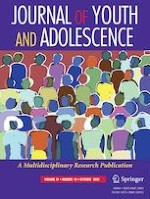05-07-2022 | Empirical Research
Helping Others in Virtual Reality Increases Prosocial Self-understanding Among Adolescents
Gepubliceerd in: Journal of Youth and Adolescence | Uitgave 10/2022
Log in om toegang te krijgenAbstract
Reflection on prosocial experiences may be helpful for adolescents highly attentive to their internal states (i.e., high private self-consciousness) to gain prosocial self-knowledge, yet adolescents with low private self-consciousness may not benefit from it. The current study proposed and examined that engaging in helping behavior would be beneficial for those with low private self-consciousness in self-understanding. Two experimental studies using immersive virtual environment technology were conducted to simulate helping situations. A total of 140 middle school students (n = 59, 47.5% female, Mage = 13.98, SD = 0.89, in Study 1; n = 81, 44.4% female, Mage = 15.31, SD = 1.18, in Study 2) completed the experiments. In both studies, adolescents engaging in helping behaviors identified themselves as more prosocial than those who did not engage in helping behaviors. In Study 2, adolescents’ positive prosocial self-concept would increase more through engaging in prosocial behavior than by reflecting on past prosocial experiences. Furthermore, adolescents with high private self-consciousness can gain self-understanding both from self-reflection and engaging in prosocial behavior, whereas adolescents with low private self-consciousness benefit only from engaging in prosocial behavior. The findings suggest the need to consider individual differences and adopt appropriate ways of self-understanding when assisting adolescents’ prosocial self-formation.
